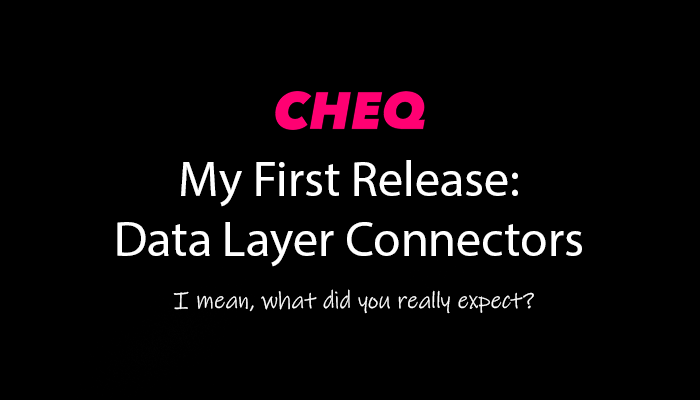I’ve officially been at Cheq for 2 months. It’s a lot of work with a lot of wonderful, brilliant people who all have the same mission – to help people do more with people. But how can you do that if you can’t adequately measure it? One of the biggest problems with these detection vendors is that it’s just hard to integrate. Creating documentation that makes sense for the people who know front-end design patterns, tag management, AND MarTech tools is remarkably difficult. Tackling that was my first objective.
The Feature
So, without further adieu… “my” first release at Cheq is what we internally call “Bridge Connectors” – it’s really Data Layer Connectors (on-brand, I know). We call it a “bridge” connector because it’s a bridge you cross to mature into importing our data via data import (we’ll talk about that later). We wanted an intuitive, flexible, infinitely scalable way to send data to the front-end so analysts could do whatever they want with it in their TMS; and that’s exactly what we built. A huge part of the reason people use Cheq is because of the transparency in the classifications… and we also don’t force you into using yet-another-interface. So this new feature makes it that much easier to plug our data into your tools so you can start acting on it.
myDataLayer.push({
event:"Of Course He Did a Data Layer",
definitelyIs:"Human",
wannaMeasure:"Agentic AI"
})
As for the specifics – the data layer connector currently supports the EDDL (again, go figure) – and will be fast-followed by Local Storage, JavaScript Variable, and Cookie support (in about 2 weeks). This is stuff that other tools are either doing very poorly – or just not doing at all. So why is this important? It removes a critical barrier and gives you complete control. We found that clients are sending data to their analytics tool (literally) within minutes. That’s huge.
Why “Bridge”?
Okay – so if this is so great, why is it called a “bridge” connector? Why not call this the… “permanent gonna use this forever” connector? Well, our algorithm is damn good. We don’t make mistakes. However, that does mean it could take more than 50ms to classify a user. As an outcome, you could hit race conditions. Now with our connectors, you can always listen for when a user is classified and trigger an event to supplement the data. It’s usually super fast. Though as an analyst, I might not want to send an event for the sole purpose of classifying traffic (then again…). For that reason, we typically recommend moving to a more permanent 1:1 ID matching cloud-sourced integration.
Final Thoughts
Before joining Cheq, I was frustrated that analysts weren’t caring enough about non-human traffic detection. One of my hypotheses was that the data just wasn’t convenient or easy to contextualize with my analytics data. We’re completely upending that. There’s still some more work to do, but I’d love to bring you along with me while I figure this stuff out. Why not try it out as a free PoC and give me some feedback?
